
1990-1995: Planting Software Seeds
Throughout the 1990’s, Microsoft established families of integrated products that all contributed toward a successful platform, with many parallels to what Apple is doing today.
Despite the two companies’ very different motivations, products, and markets, both shared many common threads. Here’s a look at how the two cautiously and enviously watched each other with the intent to learn from each other’s actions, hoping to copy successes and avoid failures.

Platform Death Match introduced the difficulty of launching a new platform and the work involved in maintaining one. This series looks at the historical march of computing platforms, to sort out why winners won and why losers lost. While the computing environment is always changing, the same basic rules are in effect today, and will shape the future developments between Mac OS X Leopard and Windows Vista.
Previous articles:
-
•1990-1995: Why the World Went Windows The smart strategies and dirty tricks used to establish the PC.

1990-1995: Planting Software Seeds
As a software company, Microsoft was only interested in selling licenses. Unlike Apple, Microsoft's profits were never directly tied to hardware profit margins. Microsoft's strategies aimed to widely spread the company’s software seeds on cheap, commodity hardware built by others.
Of course, cheap is a relative word. In 1990, a typical DOS PC cost around $2000. It offered a 386/16 MHz processor with 2 MB RAM, 256 color VGA graphics, and an optional mouse for use with the brand new Windows 3.0. Microsoft sold Windows 3.0, and the required DOS, for $200, or around 10% of the cost of the hardware. 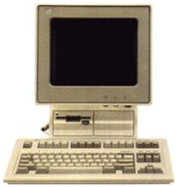

It wasn’t easy to build a significantly cheaper machine. Component costs were horrifically expensive; adding another 2 MB of RAM nearly doubled the price.
IBM's 1990 PS/2 computers, which used the brand new 486 processor, 4 MB RAM, XGA graphics, and an 80-320 MB hard drive, cost between $10,000 and $15,000.
Prior to 1990, the majority of PCs only needed to support text-based DOS applications. The high cost of hardware had prevented adoption of Microsoft's Windows simply because the processing power and graphics capabilities required to support a windowing user interface were prohibitively expensive.
At a time when many PC analysts still derided the Mac as a graphical toy, Microsoft understood that the industry would eventually follow Apple's lead into graphical PCs, and that as soon as hardware prices began to fall, its Windows product could gain broad adoption by riding the explosive growth of the PC market.
The Myth of Apple's Expensive Macintoshes
In contrast to Microsoft, Apple was very much tied to hardware sales. Until 1990, Apple had only ever sold hardware and a few minor applications. It had typically distributed the Mac system software, as well as new applications such as HyperCard, for free to all Mac users. 

Mac hardware catered to Apple's market of creative users, who worked primarily in page layout and graphic design. This demanded state of the art graphics hardware with its commensurate high price. As I described two and half years ago in the article Beyond Luxo Jr.:
"In 1990, Apple was selling the blazing Mac IIfx at $10,000 to $12,000, the nice Mac IIci at $6700 to $8800, the decent Mac IIsi at $3800, and the crippled Mac LC at $2500. The LC was basically a three-year-old Mac II with less speed and no expansion. If that wasn't sad enough, they also repackaged the five-year-old Mac Plus as the Mac Classic for $999 to $1500."
At the time, state of the art computers with SCSI hard drives, high end graphics, the fastest processors available, and specialized ASICs and caching hardware simply cost ridiculous amounts of money, regardless of whether they were Macs, PCs, or Unix workstations.
The only way to deliver a computer in the $2000 range was to repackage old technology. That's what Apple did with the Mac Classic and LC, and what PC makers did to sell lower end PCs. Those cheaper boxes obviously couldn't match the processing ability, the graphics, or any other specs of far more expensive machines, but they could target users with less money to spend.
People who compare the $2000 PC they recall having in 1990 with the $10,000 Mac IIfx, or the $11,500 NeXT Cube they read about in a magazine, are simply not are aware that those high end graphics systems were far out of the league of consumer DOS boxes.
They were priced comparable to high end PCs with similar specs.
Home DOS PCs in 1990 could barely play basic games in 256 color 320x200 VGA graphics--a much lower video quality than today’s iPod! They also lacked a wide array of common Mac features, including SCSI disk controllers, built in networking, high resolution graphics, and integrated audio.
Apple's 9% 1990 market share reflected its significant ownership of the market for high end personal computers. As Windows began to catch on, Apple faced increasing pressure to deliver Macs at a cheaper price point by using cheaper components.
While Apple did lower costs, it worked harder to retain the high-end premium market than to expand to fill out the high volume, low profit majority of the PC market. Apple could best compete on the high end with its unique product, and that market represented the vast majority of Apple’s profits.
Notable platform lesson: Sometimes, what everyone remembers is wrong.
Apple Thinks Software
Microsoft's growing success in software sales didn't escape Apple's notice. CEO John Sculley hoped to productize the Mac System 7 to sell at retail, in order to finance the company's expensive ongoing software development. 

The OS wasn't the only area where Apple realized it could diversify its offerings into software. While Apple played the hardware partner to Adobe PostScript and Aldus PageMaker in the desktop publishing market, it hoped to drive the next big movement using its own software.
Apple invested in QuickTime as the next big thing, and coined the term multimedia to refer to audio and video content that could be presented with HyperCard and make use of the huge amount of data storage offered by the new CD-ROM.
Apple also invested in advanced networking and communications technologies related to PowerTalk; experimental work related to linking, organizing, and presenting information; speech synthesis; voice and handwritten recognition; full text indexing and search; data visualization and many other projects within the Advanced Technology Group; and the office application software delivered through Apple’s Claris subsidiary.
Despite these efforts, Apple remained a hardware company driven by software; it wasn't making significant direct revenues from any of its software.
Still, the company realized that the hardware business was only going to get more competitive, and that it needed to earn revenues on its software in order to maintain its expensive development efforts. If it didn't, it would eventually be forced into the role of making non-differentiated Windows PCs for Microsoft.
Notable platform lesson: Free software development is expensive to maintain.
Microsoft Sets the Business World Ablaze
If it could get the seeds of the Windows PC platform established in business, Microsoft realized it could reap regular upgrade cycles of software licensing, generating enormous profits and creating a wildfire market that fed itself as it spread.
After reaching a critical mass, Windows would automatically sprout natural barriers to entry that would simply choke out any effective competition before it could ever take root.
Microsoft had already partially accomplished this with DOS; it now needed to convert those DOS users to Windows before rival DOS competitors could establish a marketplace of DOS alternatives that threatened to eat into Microsoft's software platform. 

The two main competitors to DOS had been Digital Research's DR-DOS and IBM's OS/2. As the PC became powerful enough to run Unix, new alternatives began to emerge. In 1990, BSD was just getting established, and Linux development was about to begin.
If the PC operating system market were allowed to blossom freely, a wide variety of DOS alternatives would have turned up, just as there were a variety of IBM hardware clones competing with each other, and just as there is a variety of Linux distributions available today.
In addition to staving off the DOS vultures, Microsoft also wanted a part of the Mac platform. Microsoft was one of the leading vendors of Mac software, so it was well aware that Mac users represented a premium market that bought more software and was ready and willing to pay extra for higher end products.
Microsoft wanted to bring those users to the PC, where it could sell them not only software applications but an operating system as well.
An Ecosystem of Integrated Software
Over the next decade, Microsoft lined up an expanding series of products that all fed each other.
Windows served as both an operating system and as a development platform. That gave Microsoft a leg up in establishing its own Word and Excel office applications in place of the existing DOS standards of Word Perfect and Lotus 1-2-3.
Considered alone, Microsoft's products were rarely the best in class, particularly in their premier version. However, as a set of integrated applications, servers, and development tools, Microsoft's products entrenched each other by creating valuable networks of complementary and familiar sets of functionality.
In the coming years, Microsoft teamed up its Exchange Server with Windows NT to build a messaging server platform that further extended Microsoft's reach into the Enterprise, cementing Microsoft as a common vendor for both user machines and servers.
A company buying new PCs would naturally get a Windows file server, and naturally go with Exchange for email. Microsoft worked to assemble other suites of products that similarly continued the progression of dominance from one area into others.
For example, on the server side, NT and Exchange were complemented by Microsoft's SQL Server database product, which the company had licensed from Sybase, and IIS, a suite of Internet ftp, web, and news services that Microsoft developed.
Similarly, Microsoft's own Word, Excel and Access were complemented by acquisitions that filled out its Office suite with PowerPoint, a presentation program originally built for the Mac; Project management software; and later Visio, a diagraming application.
Other products, such as the original Exchange client, and later the Outlook and Entourage email programs, integrated Microsoft's Office applications with Exchange Server.
These examples of integration helped Microsoft to remain mostly invulnerable to competitors, who might be able to build a better word processor or email server, but would find it difficult to assemble a functional array of integrated suites of both office and server products all at once.
Apple is clearly following the same strategy, with iWork and the iLife suite for consumers; a portfolio of Pro Apps: Final Cut Studio, Aperture, Logic and Shake; and an emerging selection of new server workgroup tools, which I’ll describe later.
Apple is also uniquely applying this strategy by integrating families of hardware products with its software, in the Xserve, Xserve RAID, and Xsan products, which all sell media production Pro Apps and, of course, Macs.
Notable platform lesson: Integrated products help insulate from competitive attacks, and provide more value for users.
Apple and NeXT in the Enterprise
Apple and others, including NeXT, obviously also wanted to enter the blooming business market, but their efforts were complicated by the Windows platform barrier. As the definition of PC became synonymous with Windows, few IT managers saw any desirable point in supporting alternative platforms. 

Why buy oddball hardware that could only run a minority, incompatible system, when the PC offered a choice of multiple vendors and wide compatibility with an emerging base of Windows software, much of which they could obtain right from Microsoft?
Apple's reliance on hardware sales for revenue forced it to abandoned its efforts to move the Mac to PC hardware, but NeXT had a different set of circumstances. While Apple was still able to sell plenty of high margin Macs to a loyal base of customers, particularly in education and in the creative and print production industry, NeXT had limited potential for new hardware sales, so efforts to migrate NeXT hardware in the same direction as Apple's would be a losing strategy.
NeXT also had something Apple lacked: portability. While Apple struggled to find ways to host System 7 as a Unix process, or retrofit new technology into the monolithic Mac System 7, NeXT had a software architecture designed to work anywhere.
NeXT's adventures in portability will be examined later, but the company's efforts to become a software vendor and follow in the same business model as Microsoft didn't work out successfully, partly due to the Windows Price Paradox.
The "Apple Could Have Been Microsoft" Myth
Common conventional hindsight suggests that Apple could itself have been "the Microsoft," if only it had acted out some of the same steps, including licensing its Mac software. However, this is actually a gross oversimplification.
Apple and Microsoft went after very different markets with very different goals and using very different strategies. If Apple had beat Microsoft using Microsoft's own strategies, Apple would have become a very different company with very different products.
Apple ended up with over-architected, elegant, creatively inspired, and classy products because that's what its employees worked to build. Microsoft ended up with under-architected, inelegant, and uninspired products that work well on a broad variety of commodity hardware. Each had its own advantages, both technically and in the marketplace.
By 1995, Apple was skidding along on its remaining goodwill, and Microsoft's Windows empire was growing and extending every year. However, major new problems were lurking in the shadows for both platforms. Apple and Microsoft were both about to face a tortured crisis in delivering upon their plans.
This Series










Monday, October 16, 2006
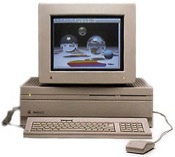



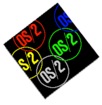

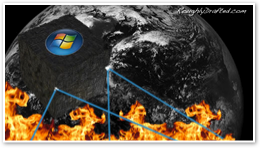
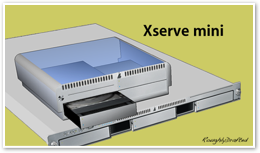

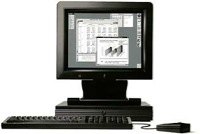
 Bookmark on Del.icio.us
Bookmark on Del.icio.us Discuss on Reddit
Discuss on Reddit Critically review on NewsTrust
Critically review on NewsTrust Forward to Friends
Forward to Friends
 Get RSS Feed
Get RSS Feed Download RSS Widget
Download RSS Widget





